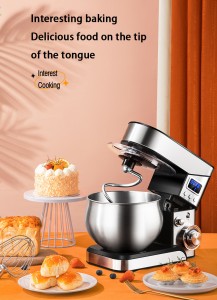In the world of baking, the stand mixer is without a doubt a beloved kitchen tool. It has revolutionized the way we prepare doughs and batters, taking much of the physical effort out of the equation. But what if you find yourself without a stand mixer? Can you still achieve the same results using your hands? Let’s explore this question and discover the joys and challenges of whipping it by hand!
The Pros of Hand Mixing:
1. Aesthetic Connection: When you mix ingredients by hand, you develop a much deeper connection to your baking. You feel the texture of the dough, the resistance of the batter, and the gradual transformation of all the ingredients coming together. There is a certain satisfaction in physically creating with your own two hands.
2. Enhanced Control: Hand mixing allows for greater control over the final outcome of your baked goods. You can adjust the speed and intensity of your mixing, ensuring a desired texture and consistency. Plus, you have the flexibility to make adjustments on the fly, such as adding more flour or liquid if needed.
3. Versatility: Without being bound to the fixed attachments of a stand mixer, you can easily switch between different mixing techniques and tools. From the classic hand whisk to wooden spoons, spatulas, and even your bare hands, you have the freedom to experiment and find what works best for each recipe.
The Cons of Hand Mixing:
1. Time and Effort: There’s no denying that hand mixing requires more time and physical effort compared to using a stand mixer. Whipping egg whites into stiff peaks or kneading a tough dough can be labor-intensive and time-consuming. This is particularly true when dealing with large batches or recipes that require extended mixing or kneading.
2. Consistency: Achieving consistent results can be a challenge when mixing by hand. It takes practice and precision to evenly distribute ingredients and incorporate air into batters and doughs. Stand mixers, with their multiple speed settings, can easily achieve thorough and consistent mixing without much effort.
3. Limited Application: Stand mixers excel in tasks that require endurance, such as kneading bread dough or whipping egg whites. Hand mixing may not be suitable for recipes that rely heavily on the stand mixer’s power, such as certain pastry doughs that need a lot of butter to be incorporated evenly.
Tips for Successful Hand Mixing:
1. Room Temperature Ingredients: Ensure that your ingredients, especially butter and eggs, are at room temperature to facilitate easier mixing. Cold ingredients can be difficult to incorporate by hand and may result in uneven textures.
2. Gradual Incorporation: Slowly add dry ingredients to wet ingredients, or wet ingredients to dry, to ensure even distribution. This prevents clumps and improves the final texture of your baked goods.
3. Proper Techniques: Utilize techniques such as folding, stirring in figure-eight motions, or gently kneading to effectively mix ingredients. These methods help develop gluten strands without overworking the dough.
While stand mixers undoubtedly offer convenience and efficiency, nothing compares to the satisfaction and control achieved through hand mixing. From developing an intimate connection to the baking process to adapting techniques specific to each recipe, mixing by hand adds an element of artistry to your creations. However, it’s important to recognize the limitations and challenges that come with hand mixing. Depending on the recipe’s complexity, a stand mixer may still be the preferred option for achieving consistent, time-efficient results. So next time you find yourself without a stand mixer, take a leap of faith and embrace the joy of whipping it by hand!
Post time: Aug-10-2023

